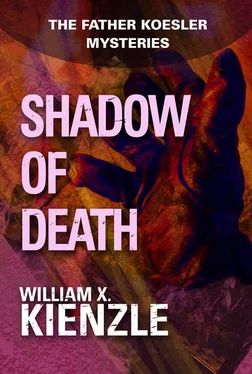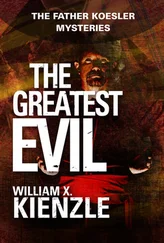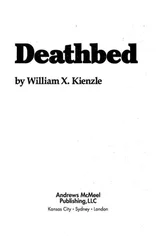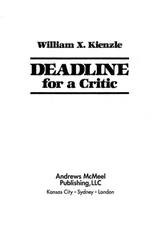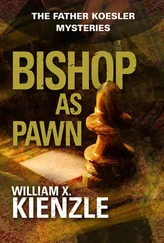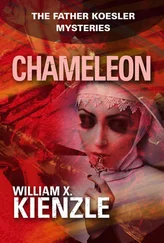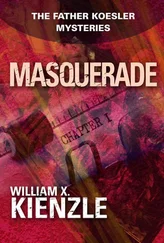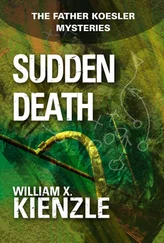“So, in retrospect, I was willing to assume he was telling the truth. But if my assailants were not Rastafarians, then who? And why?
“The Rastafarians definitely were involved in the attacks against the Cardinals. And—presumably—the attacks against the two of you. But now me. Why?
“Well, what if we crossed out the ‘possibles’ and counted only on the ‘certains’? This point of view was strengthened by the changing of the symbol from a fist to an open hand. That would put the Cardinals in one category and the three of us in another. And, it could mean that none of the three of us had been assaulted by the Rastafarians. But, again, by whom? And why?
“The only time I could think of that all three of us were linked was during the investigation of that series of beheadings on Detroit criminals. Inspector Koznicki was in charge of the investigation and”—he hesitated a split second, then chose his words carefully— “you, Ramon, were under suspicion of being somehow involved. While I, in addition to taking some small part in the investigation, am a very close friend to both of you.”
The faces of Koesler’s friends were a study. Wanda Koznicki seemed engrossed; her husband professionally interested. Toussaint’s expression was unfathomable, while, strangely, Emerenciana seemed almost detached. Her face reminded Koesler of the statues of the far-seeing sibyls of old; it was as if she were listening to a tale she not only knew but had always known.
Koesler picked up the thread of his explanation.
“If that was the connection, then whoever was after us had to have some connection with someone associated with that series of murders—the most logical someone being one of the victims. But which one? A Mafia chieftain, a head pimp, an unconscionable abortionist, a bilking auto mechanic, a similar construction man, or the kingpin of a drug ring?
“Then I thought back to when, on our flight to London, Ramon, you told me you were not sure where that black fist symbol had come from, but that it possibly had been adapted by the Rastafarian militants from the Black Power movement in the States.
“It was the weak link. It was the only ‘probable,’ the only ‘uncertain.’ So then, what if it were not a Rastafarian symbol? After all, they had no known sign or symbol other than their dreadlocks.
“I pursued that line of reasoning: If it was not Rastafarian, then what? Was there another group that used the symbol of a black hand?”
All present seemed to grasp Koesler’s explanation. Indeed, several of his listeners appeared to be ahead of the explanation. They were, of course, familiar with the notorious Black Hand Society, which had been one of the pseudonyms of the Mafia, or Cosa Nostra, in earlier days. The black hand had become an almost universal symbol of terror as people had first become aware of it and then instilled with the fear of it.
“The Black Hand, of course,” said Koznicki. “If only we had thought of that possibility early on. The whole concept is perfect for an organization such as the Mafia. The purpose of a syndicate murder is not profit—although that occasionally may be a byproduct. And such killings are frequently meant as a message, not just of revenge, but of punishment and intimidation.
“No, the syndicate cannot chance the possibility that such an execution might be mistaken as an accident or as a murder perpetrated by anyone else for any other purpose; they must make their message clear, or else the revenge, the punishment and the intimidation would be missing or overlooked.
“In addition, with the Mafia, we are dealing with a group among whom symbols are of specific importance. When we find ritual victims of the Mafia, we can tell what syndicate crime the victim had been guilty of from the appearance of the corpse. Begging the pardon of you ladies, but a man whose tongue has been cut off has violated the ornertà, the silence. He was a stool pigeon. Hands amputated indicates a thief. Genitals stuffed in the victim’s mouth shows the victim offended another member’s woman. A dead fish sent from one Mafia family to another means the recipient’s messenger has been drowned.”
As the Inspector went on, Koesler smiled to himself; his friend was never so happy as in his role as educator.
“Now the black fist—or the clenched black hand, however one wishes to describe it—was found at the scene of each attack against a Cardinal. Then, at Madame Tussaud’s, after Toussaint’s disappearance, we found another black hand. Only now, for the first time, it was not clenched, but open. And after the sidewalk was cleared, at the spot where I was shot . . . another open black hand. And had not Superintendent O’Reardon been on the job, there would have been a black hand to mark the spot on the Burren where the killing of Father Koesler would have taken place.
“These black hands served two primary purposes: first, as a red herring for the police, who were meant to—and did—assume that these attacks were all being committed by the Rastafarians. After all; all other evidence aside, wasn’t there an imprint of a black hand at the scene of each attack to tie them all together?
“And second, to focus further attention more closely on the Rastafarians and divert any thought of investigation in any other direction.
“But there was a third purpose—and this was why the signature was changed from a fist to an open hand. When all was said and done, and all three of us had been disposed of, it was imperative— almost mandatory—that certain people get the word: This is what happens to our enemies. This is what happens to those who would strike against us. This is our revenge. This is our justice.
“And so the ancient symbol of the Mafia—the black hand—was resurrected to deliver a message to any who might think they could strike against today’s Mafia with impunity.
“It was suggested that the Mafia chieftain killed in that series of ‘unsolved’ murders, the Inspector glanced at Ramon Toussaint, “had been frightened to death. If you will recall,” the Inspector looked meaningfully at Toussaint, “this was the conclusion reached by Dr. Moellmann, our esteemed medical examiner.
“So, Reverend Toussaint, since the Mafia had convicted you in absentia in its own kangaroo court, it was obligatory to terrorize you before their very brutal attempt at murdering you. Not only was the symbolism to be carried forward, but, in effect, the murder was to be the message.”
The Inspector paused, glancing at Father Koesler and then returning his gaze to Toussaint. “By their standards—by anyone’s standards—that deadly beating settled a few debts.”
Koesler’s eyes flickered; Toussaint’s face remained impassive.
The Inspector sipped his tea and then resumed. “There is no doubt whatsoever that they would have pursued their plan until it was successfully concluded. They have a phrase for their concept of revenge . . .” Koznicki searched his mind.
“Like taking a stone out of one’s shoe,” Koesler supplied. “Mr. Licata mentioned it during our conversation.”
“Exactly. Once Father Koesler and I were away from police protection—as one day we surely would have been—they would have struck again. And the same would have been true in your case, Reverend Toussaint. Once they realized the report was false, that you were not in a lifelong coma, they would have come for you.
“As it was, instead of remaining in a coma, you were able to pick Licata out of a photographic lineup as the man who was not only present at your clubbing, but, indeed, as the one who ordered it. Licata thought you were in a permanent limbo, whereas actually you were gathering the strength necessary to testify against him.”
“Yes, but that brings up another question,” said Toussaint. “I was able to make a positive identification of Licata and I was able to testify against him. Why then, did Bob have to visit Licata? Was that not taking a foolish and unnecessary risk?”
Читать дальше
